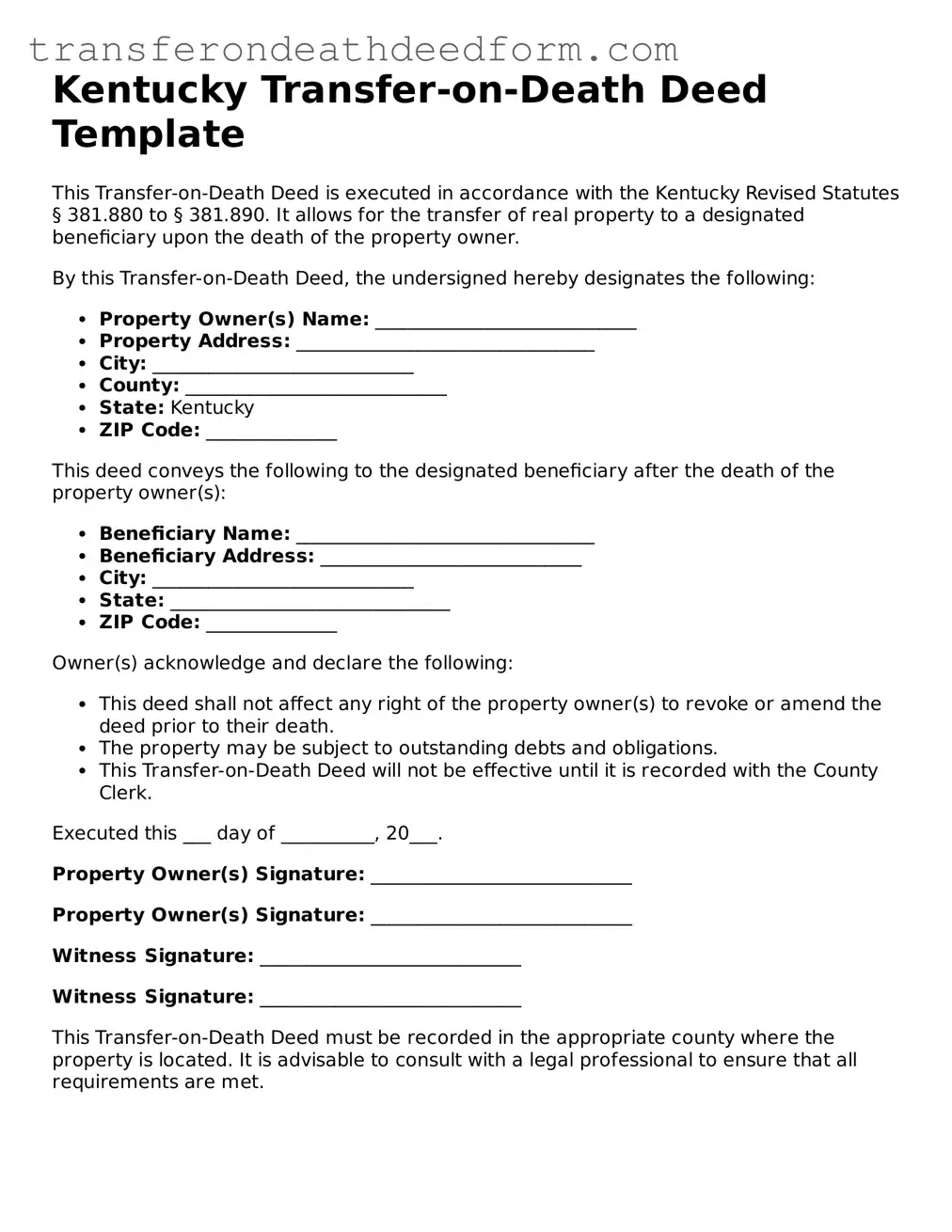Kentucky Transfer-on-Death Deed Template
This Transfer-on-Death Deed is executed in accordance with the Kentucky Revised Statutes § 381.880 to § 381.890. It allows for the transfer of real property to a designated beneficiary upon the death of the property owner.
By this Transfer-on-Death Deed, the undersigned hereby designates the following:
- Property Owner(s) Name: ____________________________
- Property Address: ________________________________
- City: ____________________________
- County: ____________________________
- State: Kentucky
- ZIP Code: ______________
This deed conveys the following to the designated beneficiary after the death of the property owner(s):
- Beneficiary Name: ________________________________
- Beneficiary Address: ____________________________
- City: ____________________________
- State: ______________________________
- ZIP Code: ______________
Owner(s) acknowledge and declare the following:
- This deed shall not affect any right of the property owner(s) to revoke or amend the deed prior to their death.
- The property may be subject to outstanding debts and obligations.
- This Transfer-on-Death Deed will not be effective until it is recorded with the County Clerk.
Executed this ___ day of __________, 20___.
Property Owner(s) Signature: ____________________________
Property Owner(s) Signature: ____________________________
Witness Signature: ____________________________
Witness Signature: ____________________________
This Transfer-on-Death Deed must be recorded in the appropriate county where the property is located. It is advisable to consult with a legal professional to ensure that all requirements are met.
